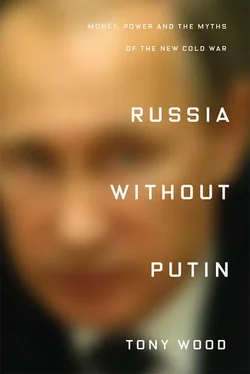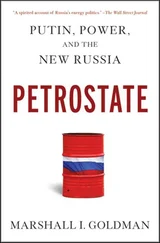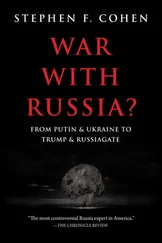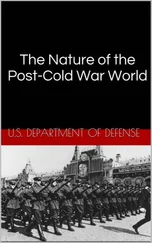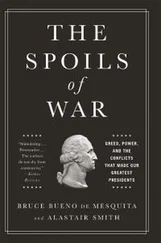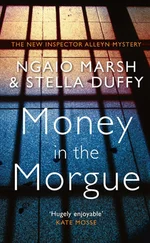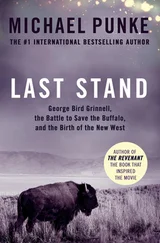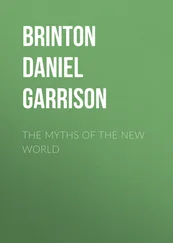Why, then, has the Cold War framework proved so tempting as a means of understanding relations between Russia and the West? For hardened hawks and Beltway pundits it no doubt offers the comfort of familiarity, as well as a ready repertoire of tropes and imagery. But it has gained momentum among a wider public, both in the US and far beyond its borders. The idea of a ‘New Cold War’ seems, more than anything, designed to fill a conceptual vacuum – compensating for the lack, in the minds of many, of ways to grasp the disconcerting novelty of the current geopolitical moment.
Taken together, the developments of the past few years confirmed that the world had entered a new geopolitical era. These events marked both the demise of the fantasy of Russian integration or alliance with the West, and a durable shift to a more confrontational stance. Again, this was not the result of a pre-programmed Russian hostility to Western values, or indeed to Western policy goals more broadly: Russia has, after all, lined up with the US several times on key issues, such as sanctions on North Korea and Iran, and has made sure to coordinate its airstrikes on Syria with the USAF, for example. But where US and Russian interests diverge most sharply, the Kremlin has sought to counteract or forestall Western moves more actively than before.
Still, it should be borne in mind that in the cases of Ukraine, Syria and the 2016 US presidential election, the Kremlin’s actions were tactical improvisations rather than moves in any alternative grand strategy. The suddenness and decisiveness of these actions seemed almost an end in themselves, designed to alter the parameters of the geopolitical situation so radically and abruptly that the West would be compelled to change course. The problem with this approach, however, was that after each dramatic move, the situation began to settle once more into its normal pattern, creating the need for another, still more drastic move; the result was that Russian policy was gradually replaced by a string of increasingly risky fuites en avant .
The Syrian intervention was in other respects a more significant moment than the Kremlin perhaps intended. It was Moscow’s first serious military deployment beyond the former USSR since Afghanistan in the 1980s, other than Kosovo and small contributions to UN peacekeeping contingents; it was also the first time Russia had relied almost exclusively on the use of air power (in that regard, following very much in the US’s footsteps). These were no small additions to Russia’s tactical repertoire, and they set precedents that cannot be ignored or easily revoked. Once used, the methods of war have a way of generating their own reasons, until they become normalized instruments of policy – as the example of the US itself, engaged in multiple unwinnable wars disguised as limited, ‘surgical’ interventions, shows.
We are likely, then, to see more turbulent, unpredictable times ahead where Russia and the West are concerned – something much less stable and well-defined than a ‘New Cold War’. The shift is especially striking because the underlying parameters governing relations between the two sides remain substantively unchanged: there is still, after all, a dramatic imbalance of power. The US enjoys accumulated advantages that allow it to either attend to or ignore Russian interests as it pleases. Russia, meanwhile, retains enough of its great-power habits of mind to resent this state of affairs, but cannot by itself reshape the relation of forces. Unless and until these conditions are altered, under the current logic of confrontation, more clashes are likely.
Yet something has undeniably changed. For much of the post-Soviet period, the problem of Russia’s global position – both in a literal, geographical sense and in strategic terms – was largely bracketed, obscured by the lingering dream of a Westernizing Russia joining with its former adversaries. All through the gradual process of disenchantment that has taken place over the past two decades, that problem remained fundamentally unresolved. Events since the Ukraine crisis have brought us back to it, demanding that we think again about Russia’s place in the world.
CHAPTER 6
Russia in the World
ASEA CHANGE HAS TAKEN place in the international order. Two and a half decades after the end of the Cold War, Russia’s fantasy of integration or alliance with the West has finally been buried. It is, of course, possible that there will be some rapprochement with the West in future, and that relations will improve from their current abysmal state – particularly in Europe, where trade links and physical proximity may ultimately encourage a softening of the sanctions regime. But even then, there will be no return to the integrationist dream on Russia’s part. The ground has fundamentally shifted, and from where everyone is now standing, the world looks very different.
The change in official thinking is clear enough. The Russian government’s official ‘foreign policy concept’ from February 2013 described the country as ‘an integral and inseparable part of European civilization’, and made it clear that priority was to be given ‘to relations with the Euro-Atlantic states which, besides geography, economy and history, have common deep-rooted civilizational ties with Russia’. In the next iteration of that document, in December 2016, these allusions had disappeared. After a long interregnum, Russia once again finds itself part of the non-West.
Yet this development has by no means resolved the much larger question of Russia’s role on the global stage. If anything, it has deepened the dilemmas the country faces. What place will Russia occupy in the twenty-first-century interstate system? Will it slide down the pecking order to become a merely ‘regional power’, as Obama rather disparagingly put it in 2014, or will it regain its Soviet-era status as one of a handful of major global players? Despite the country’s reduced circumstances compared with Soviet times, both its policymakers and much of its population retain the titan’s worldview – yet without the globe-spanning ideology that gave meaning to its position in the twentieth-century world. In some ways, Russia’s geopolitical situation today is an external version of the parallelism of old and new within its borders: no longer a superpower rival to the US, it is still unreconciled to becoming a second-rank regional actor.
Russia’s awkward, intermediate status in itself generates all kinds of contradictions and tensions in the country’s policy outlook. But there are many other constraints, both internal and external, which will work to shape its role in the world to come – limiting or inflecting the choices its leaders make, and putting multiple pressures on its political system. The possibilities for Russia will also greatly depend on what kind of world we are in: one still dominated for the foreseeable future by the US as a single superordinate power; a ‘multipolar’ one in which no one power can dominate; or one on the way to Chinese global hegemony.
In the long run, where is Russia going? Gogol famously ended the first part of Dead Souls with an evocation of the country as a troika racing headlong into the future, its destination unknown: ‘All that exists on earth flies by, and, looking askance, other peoples and nations step aside and make way for her.’ {1} 1 Nikolay Gogol, Dead Souls , trans. Robert Maguire, London 2004, p. 283.
The horizon for today’s Russia seems narrower, the scope for such feverish ambition curtailed. But its role will remain significant, even in a century that promises serious shifts in the global balance of power. All the more reason, then, to think seriously about how the country sees its future self, and what obstacles and opportunities might lie along its path.
Читать дальше
